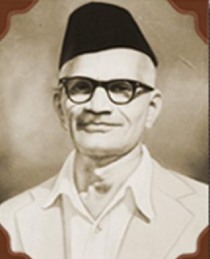
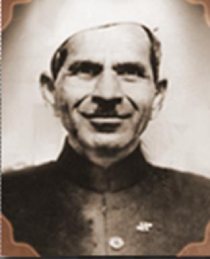
Shree Hanuman Vyayam Prasarak Mandal, Amravati was founded by the Vaidya Brothers namely Anant Krishna and Ambadas Krishna in the year 1914, as a small Hanuman club. The Vaidya brothers may be rightly regarded as the pioneer organizers of the movement of physical education in Vidarbha Region. The small club thus founded by them half a century ago has now come to be recognized as a National Institution which has also earned some international reputation. When this club was founded, there was a general apathy for physical education. In those times the traditional institutions i.e. Akhadas were viewed with suspicion as places of anti-British revolutionary movement. The Vaidya brothers while founding the Hanuman Club had 2 clear objectives in view. One was to link up the movement of physical education with the national movement of Indian renaissance and the second was to modernize and systematize the traditional Indian system of exercises in such a way as would bring in bold relief the best and knowledgeable elements inherent in it. They had a broad and open mind and hence were also anxious to incorporate into the old Indian system elements from the Western methods and systems of physical education and recreation.
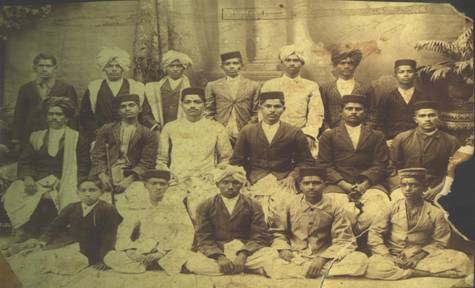
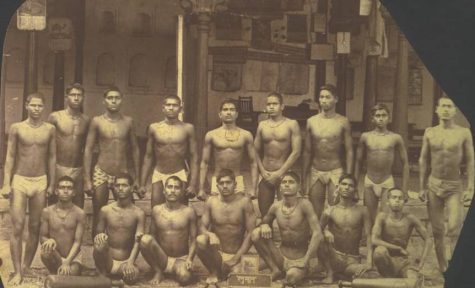
When Hanuman club was founded the time was not propitious for propagating its cause openly. For some time, it had to be conducted in a secret manner until it grew into a big institution, which could come into the open. The First World War had ended in the success of the British Government and some liberal reforms were introduced in the political and social life of India. It was, therefore, in 1918-19 that the Hanuman Club was renamed as The Hanuman Vyayam Mandir which could openly spread its activities among the youths of Amravati as well as those coming from other places to Amravati for educational purposes. In short time, the daily attendance went up from 150 to 450. Several youths trained, went back in course of time to their respective places and began to organize gymnasiums on the lines of the training, they had received. This development further necessitated reorganization of the Hanuman Vyayam Mandir into Shree Hanuman Vyayam Prasarak Mandal, which virtually means a body devoted to the organization of gymnastic institutions. Hanuman is mythological deity of India devoted not only to health and strength but is the very incarnation of ideal health, strength, character and intelligence. This ideal was, therefore, imbued in the very name of the organization.
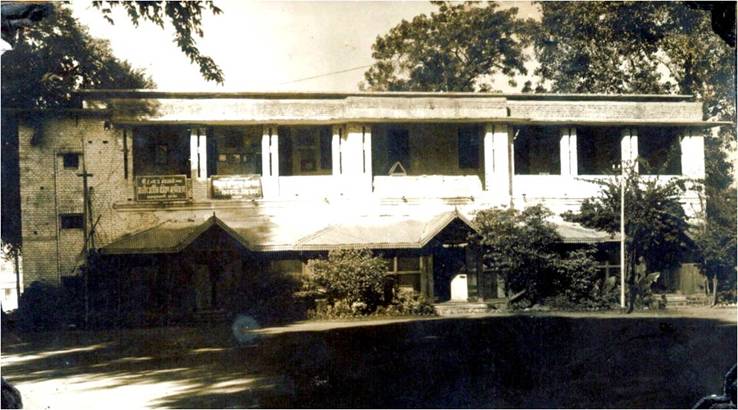
The efficacy and elegance of Mandal’s students was tested in various gymnastic tournaments. In the year 1925 when Central Province and Berar Olympic Meets were held at the District Head Quarters of Yeotmal where provincial Olympic authorities allowed competitions to be held in India’s traditional games and exercises. In this meet young athletes of Mandal secured most of honours and suddenly got a spurt of high reputation. This success encouraged the organizers of the Mandal to launch a new scheme of popularizing these exercises and games on a country-wide basis, so the idea of summer vacation classes of physical training was devised implemented. These classes are being run every year almost uninterruptedly since 1925.
The Mandal established itself as a great training centre of the modernized and systematized Indian system of physical education. The efficacy of this training was by now so widely known that the Mandal began to receive demands from several local bodies, institutions and organizations to supply instructors, organizers and propagandists of physical education. The Mandal had to keep itself so equipped as to be able to make constant supply of such men whenever and wherever demanded. Mandal has deputed many young men on this mission to several parts of the country namely Gujrath, Mumbai, Karnatak, Madras, Uttar Pradesh, Gwalior, Indore, Ujjain, Delhi, Punjab, Bihar, Bengal, Assam, etc.
The movement of Physical Education in India became at that time indissolubly linked up with the national movement of independence which assumed enormous proportions in the form of non co-operation and civil disobedience during the years 1921 and 1930. The revolution was making a headway on its path. Several workers of the H.V.P. Mandal in their individual capacity plunged into the revolutionary movement and also in the general mass movement of independence. Some of them became martyrs by dying in sufferings, one went to gallows and several suffered imprisonment. The Mandal also lent its support for the organization of volunteer’s corps that was needed for the disciplined organization of the National Movement in the country. National leaders like Mahatma Gandhi, Pt. Motilal Nehru, Netaji Subhash Chandra Bose, Pandit Madan Mohan Malviya, Shri. N.C.Kelkar, Dr. Rajendra Prasad and Lala Lajpat Rai and many others were attracted to the activities of the Mandal and had paid visits to its Head Quarters on different occasions. The encouragement given by these leaders and especially by Mahatma Gandhi to the Mandal went a long way in popularizing the cause of physical education in the country. The activities of the Mandal thus did not remain confined to the solitary and disjointed sphere of physical education but became one and unison with the general national movement of renaissance and reconstruction.
It may be noted here that apart from assuming the form of a big training centre, the Mandal also took upon itself the task of educating the people on the correct understanding of the problems of physical education in general and on the fine-arts character of the Indian physical culture in particular. In fact, physical culture forms an essential part of the Indian culture which is led to be one of the oldest and noblest cultures of the world. The Indian culture continued to keep its vitality through the passage of several centuries despite enormous changes and transformations that took place in the social, economic and political life of the people. The Mandal had devoted its efforts to discover to our people that Indian physical culture was a living force on which depends the vitality of our nation. Towards this end, the Mandal’s workers spoke on various platforms, contributed several articles through the press and created an awakening that was essential for the progress of its objectives. Though the cadre of the Mandal’s workers was full of patriotic persons who longed for independence and who joined the ranks of the National Movement, the Mandal generally concerned itself with the physical well-being activities of the younger generation. It kept a vigilant eye on all positions of vantage from where its cause could be pushed further. Several local bodies approached the Mandal for schemes of physical training. The workers of the Mandal were also taken up on most of the committees, which were formed to prepare schemes of physical education.
Apart from the aforementioned propaganda measures the unique and most effective measure undertaken by the Mandal was demonstration-cum-propoganda tours by teams consisting of 150 to 300 young boys and girls. These big teams of the Mandal visited most of the Indian provinces and big towns and gave displays of their performances which were usually attended by thousands of educated people and students at every place. These tours and consequent demonstrations had a very good effect, in that great awakening of mass consciousness for physical betterment was brought about in general; besides exhibiting the fine characteristics of the Indian exercises in particular. To its own athletes-both boys and girls-these excursions gave a nice opportunity of visiting places of national and historical importance of gaining knowledge of the different peoples and institutions of our own country and of broadening out-look. The tours gave the most practical training to them in attaining qualities like corporate life, endurance, self help, hard labor and organization. The tours thus served to educate the Mandal’s own youths and also educated at the same time workers in the field of physical education in different parts of the country. From the areas, to which these excursions were made; came an incessant flow of trainees in the summer classes of the Mandal.
Along with creating general consciousness in the Indian people for physical betterment and earning a special place for the traditional Indian System of Physical exercises and games in the country’s schemes of physical education, the Mandal now aimed at carrying the message of India’s physical culture to foreign countries for higher studies had created a background for the fulfillment of this object.
The Mandal did not mean to remain an idle worshipper of strength and to allow its workers to degenerate into vagrants who commit unsocial acts. The Mandal therefore, rightly aimed at sublimation of human instincts. To this end were always canalized the energies of its workers. Opportunities of serving the people were availed of; Whether it was fighting fire, saving lives from drowning, distributing medicines to poor, serving as volunteers for the control and management of crowds and big gatherings, lending assistance in the control of anti-social elements or helping the public in any other way, the Mandal’s workers did not hesitate to do their part of duty. The Mandal also lent its band-troupe to play on both official and non-official functions in the country on several occassions. The necessity of this sort of social service was indeed very great during the pre-independence period as it is now. It was, therefore, with the object of creating a sense of active self-help, self-respect and discipline among its own workers and raising the morale of the general public that in 1932 the Mandal organized a special wing of social workers under the title “Civic Defence Force” (C.D.F.). The members of C.D.F. later supplied personnel to the Government organizations such as Home guards, urban infantry, Territorial Army, etc. The C.D.F. also gave rise to several other volunteer organizations of similar nature in different parts of the country. The role that the H.V.P. Mandal and these volunteer organizations played in the national struggle for freedom has been borne out in. “The History of the Freedom Movement” a volume officially published by the Provincial Govt. of M.P. During war-time the Mandal trained its workers specialy in fire-fighting and ARP and also conducted classes in these activities for the benefit of the public. The Mandal’s capacity to train volunteer forces was put to test when its workers were called upon to recruit, train and organize a volunteer force of 3000 strong including 500 women on the occasion of Tripuri Session of the Indian National Congress held in the year 1939.